Chiba Prefecture is best known as the location of Narita International Airport, the primary international gateway to Japan, which means that most visitors to the country have at least passed through the area. However, despite Chiba’s proximity to Tokyo, few tourists venture beyond the airport to the Pacific coast on the eastern side. This makes it a great destination for escaping the urban crowds.
Departing several times a day from the underground platforms at Tokyo Station, the Shiosai limited express makes the 120 km journey to Chōshi, the easternmost city in Chiba, in two hours. We took the first train of the day at 07:30, giving us plenty of time to explore without rushing.
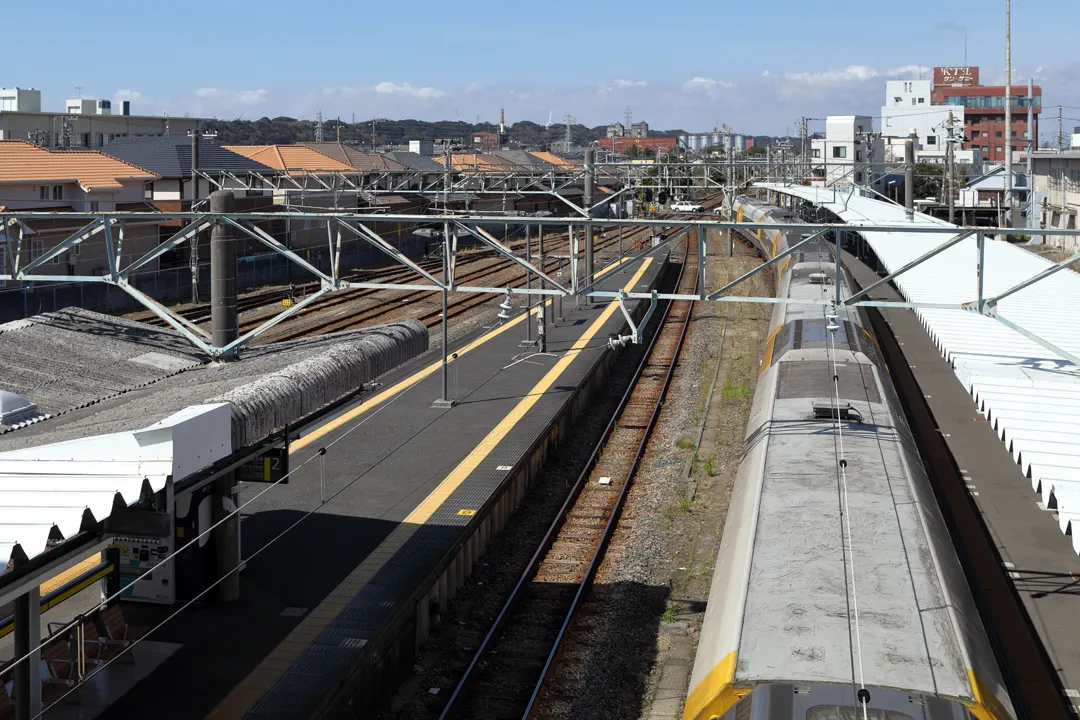
Upon arriving at Chōshi Station, our attention was immediately drawn to the giant wooden barrel on the platform. It represents the traditional method of manufacturing soy sauce, a famous local product.

We had to wait for a while longer before the next local train, so we went to look around outside the main entrance. Chōshi only has a population of around 55,000, but boasts a livelier atmosphere than most similarly sized Japanese cities (such as Uwajima). There was a decent amount of pedestrian and vehicle traffic, and many businesses were open.

Back in the station, we crossed the overpass to the small platform of the Chōshi Electric Railway (or CDK, the acronym for its Japanese name). This local railway has a length of just 6.4 km, 10 stations, and a leisurely top speed of 40 km/h — but these modest specifications belie a remarkable business turnaround story.
In the early 2000s, long-term declines in ridership had left CDK in a precarious financial situation, with unprofitable operations and no funds left for repairs or maintenance. When bankruptcy was imminent in 2006, employees devised a radical plan to raise money: selling rice crackers online. The snacks became a viral hit and led to further expansion into the food industry, which now accounts for 80% of the company’s revenue. They also continued to use the internet effectively for generating publicity; CEO Katsunori Takemoto even personally makes a lot of videos for their YouTube channel. By 2022, CDK had manage to return to profitability.
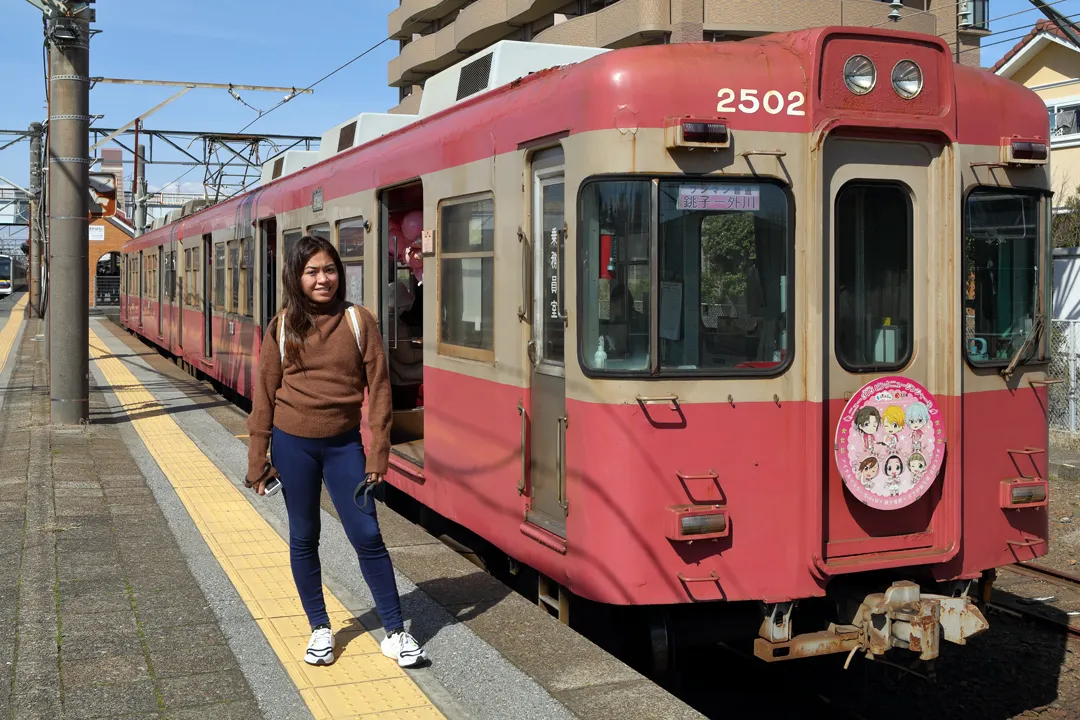
The train was already waiting at the platform. While it looked ordinary, if somewhat dilapidated, from the outside, the inside was filled with hundreds of pink balloons and stuffed animals to attract social media users. Even the lights were covered with pink filters.

As no electronic ticketing system has been implemented, staff must manually check the individual paper tickets, which is still manageable because there are rarely a lot of passengers. This could be handled by the driver when the train stops, but when we were riding, there was a conductor who was responsible for it.

We got off at the second to last station, Inubō, the most convenient located one for tourists. The design of the station building, with its red tile roof and white walls, takes inspiration from Portuguese architecture.
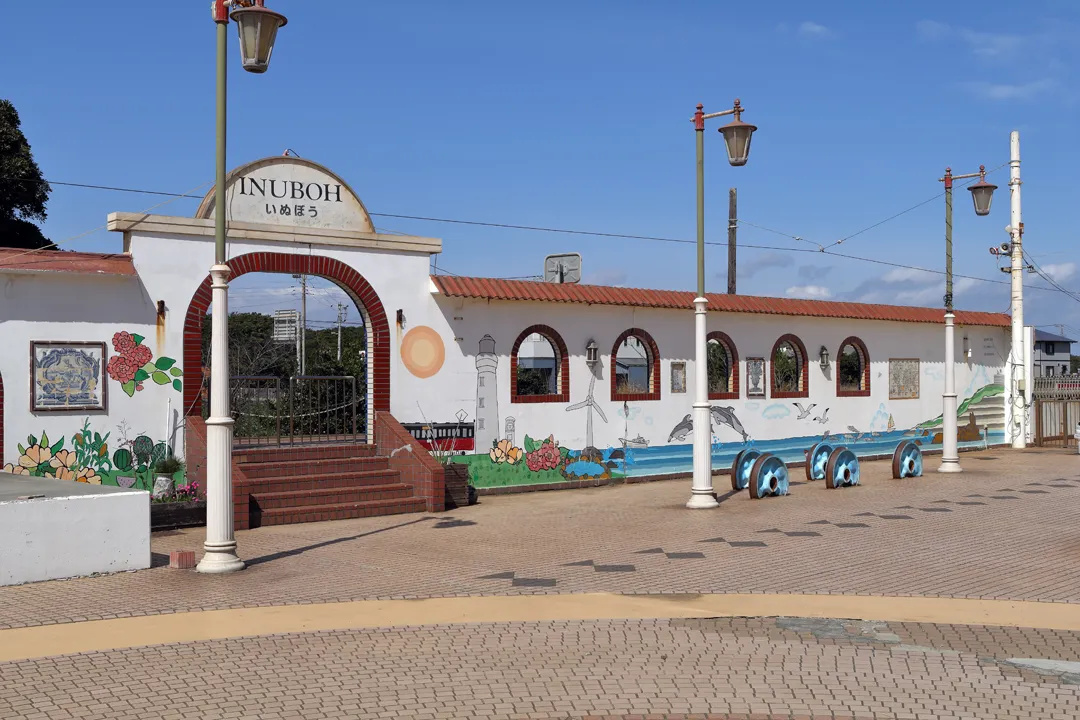
From this station, it is only a ten-minute walk to Cape Inubō, the easternmost point in the Kantō region. The term “inubō” (犬吠) literally refers to a dog’s bark. It is unclear why the place was named this way, although various theories exist. Incidentally, the mascot of Chiba Prefecture is a dog, but it is based on the shape of the prefecture’s outline on a map, not on this name.

The most visible attraction at Cape Inubō is the lighthouse, though we first went inside the visitor center, where there are some restaurants and a souvenir shop. Even though the car park was full, there really were not many people around and it did not feel crowded anywhere.

On the second floor, there is a viewing area with some nets installed as seating. We relaxed there for a while. It was nearing the end of our trip, so we were too tired to walk a lot in a short time.

From there, the Pacific Ocean can be seen all the way to the horizon. Other than a few extremely remote outlying islands and the summit of Mt. Fuji, Cape Inubō is the place with the earliest sunrise in Japan. The tip of the Nemuro Peninsula in Hokkaido is almost 5 degrees longitude farther east than Chōshi, but the sun actually rises later there because it is also much farther north.
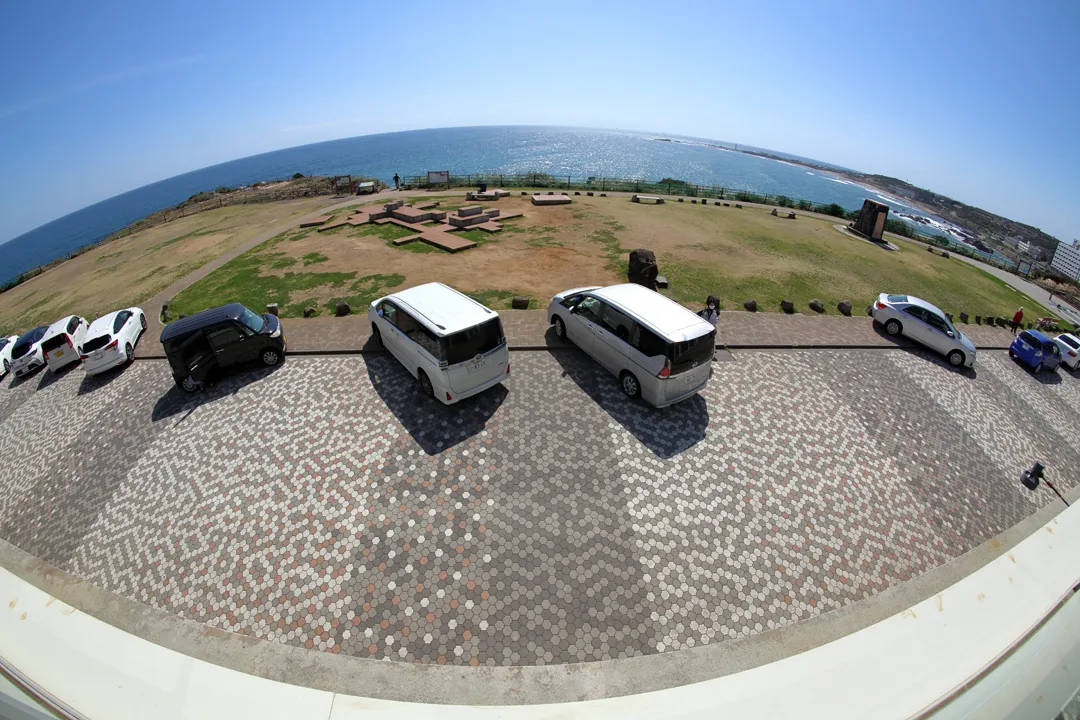
When we had rested enough, we proceeded to the lighthouse, the most significant historical building in Chōshi. A lighthouse at this location was proposed in 1868 after a shipwreck in the vicinity killed 13 people. At the time, the Japanese government had recently ended its policy of isolationism and was hiring Western experts to help build modern infrastructure across the country. As a result of this initiative, Inubōsaki Lighthouse was completed in 1874 to a British design. It is still actively used today, having been in operation for 150 years except for three months in 1945 when it was attacked and damaged by American aircraft.

During the day, the lighthouse is open to the public. We bought tickets for 300 yen, climbed the spiral staircase to the top, and went out onto the deck. Because lighthouses are designed to be visible from as far away as possible, the views from the top are also superb. The clear weather combined with the flat topology of Chōshi gave us almost unlimited visibility. However, it was extremely windy and cold there.

Directly north of the lighthouse, there is a crescent-shaped beach. It should be quite popular in the summer, but it was only March and nobody was there.

After descending from the lighthouse, we first returned to the visitor center for lunch. Our choice was the teriyaki chicken flatbread from the café on the ground floor. It was great to have a lot of fresh vegetables for the first time in two weeks, since Japanese food, which we had been exclusively eating, incorporates them sparingly.

Then, we proceeded to the south side of the cape, where there is a trail offering a closer look at the rocky coastline.

The trail leads almost to the bottom of the slope, but not too near the water because the rugged terrain of the shore makes it dangerous to approach.

However, some Japanese tourists disregarded this and went out onto the rocks, even though the trail is clearly marked and bounded. We were very surprised by their behavior as Japanese typically adhere stringently to rules, e.g., waiting for the signal at zebra crossings even when there are no oncoming cars.
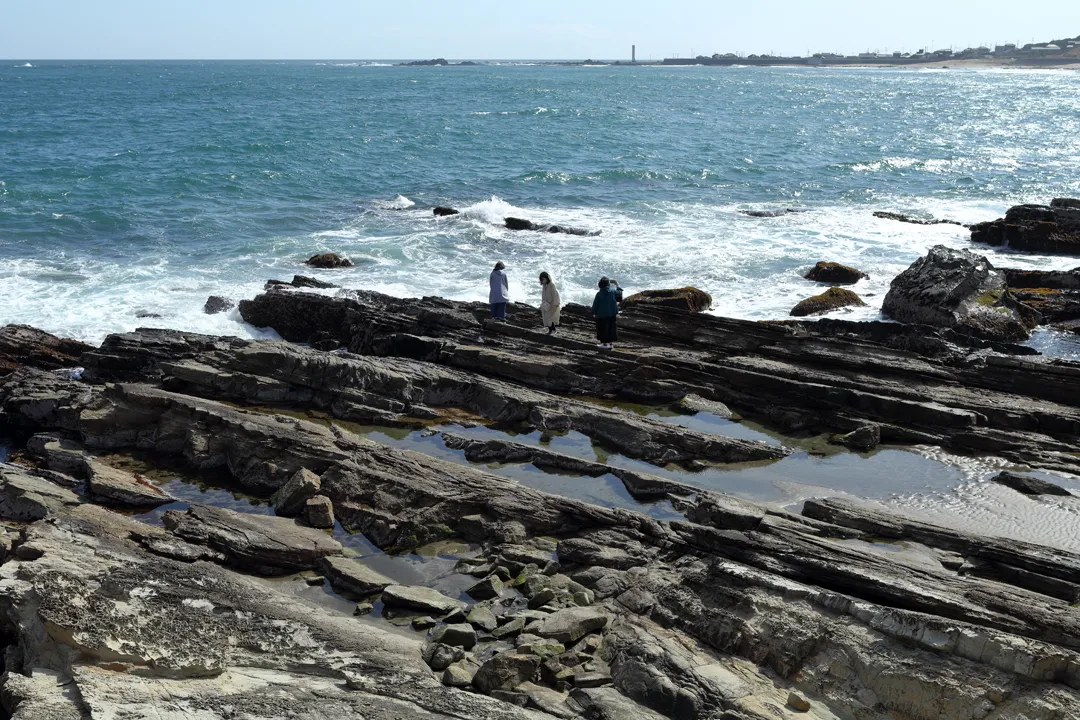
Of course, we were not going to follow their bad example, so we only made it to the end of the trail and then headed back to see the beach on the opposite side. By this time, it was not that cold any more, but still far from any sort of beach weather.

Between the lighthouse path and the start of the beach, there is a rocky section, but it is considerably different from the south side, with much smaller rocks. The beach itself is not particularly impressive, although we have seen few other beaches in Japan, so we do not have much in terms of comparisions.
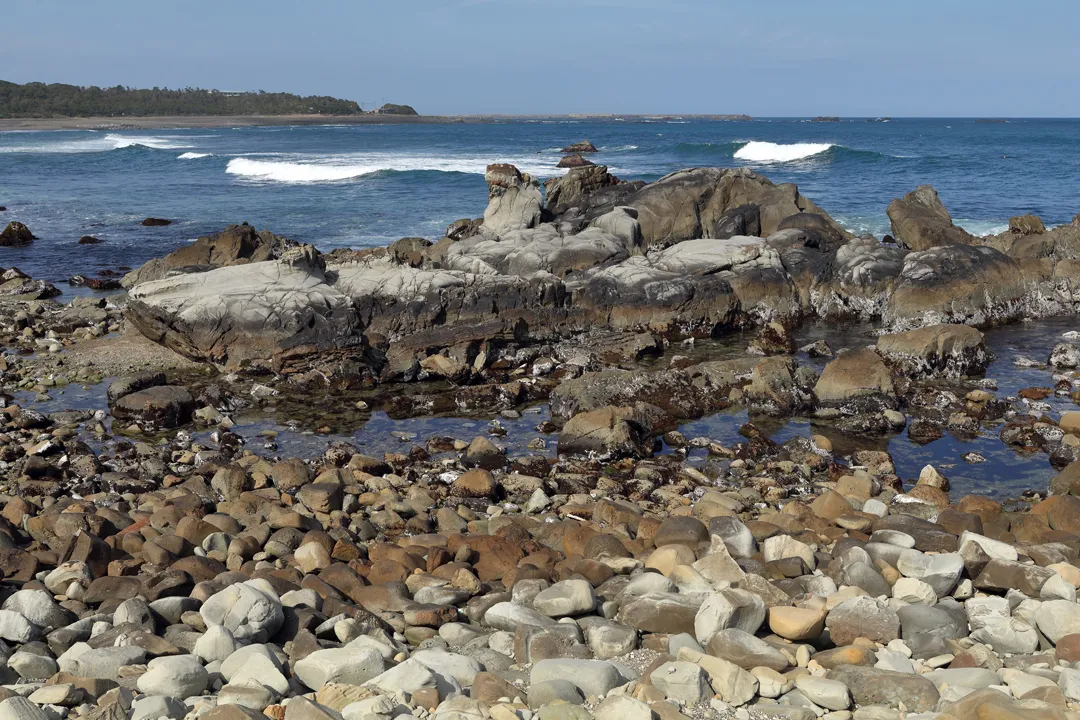
Before leaving Cape Inubō, we stopped in the visitor center once more and enjoyed local ice cream. We dared not try the unusual soy sauce ice cream on offer, instead just defaulting to strawberry.

Finally, it was time to start making our way back. While waiting for the train at Inubō Station, we browsed through the surprisingly wide range of items at Chōshi Electric Railway’s souvenir shop. The other well-known snack that they sell, aside from rice crackers, is taiyaki, a fish-shaped pastry dessert, but we were unable to try it because the taiyaki stand at the front of the station seemed to be temporarily closed.
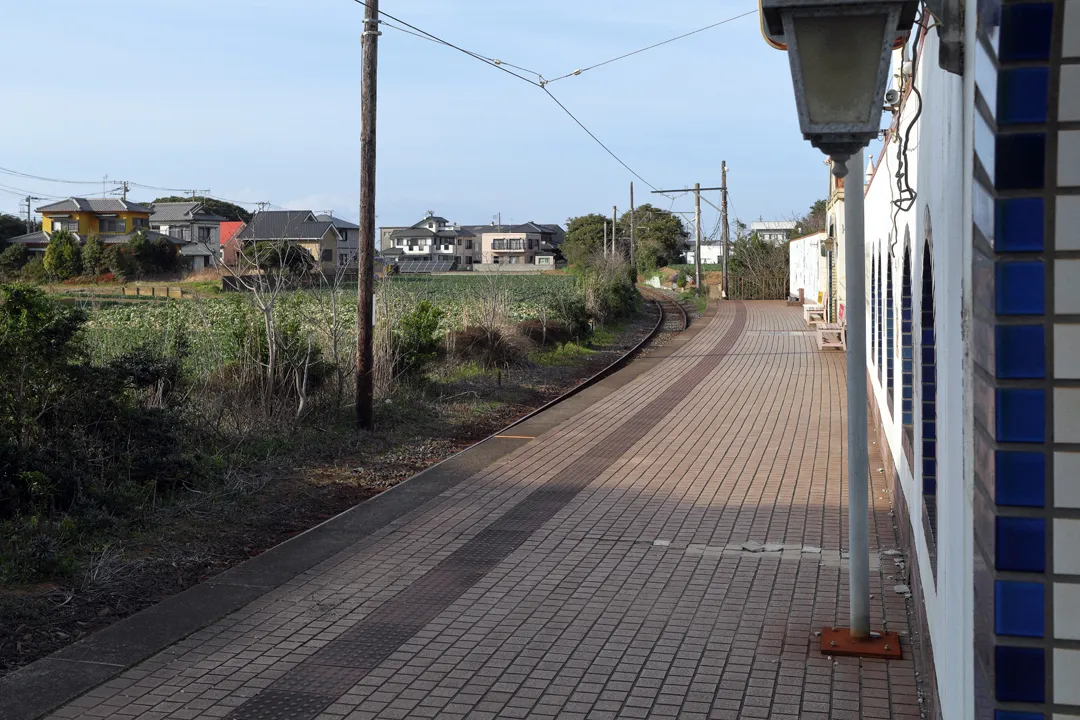
The train that soon arrived was the same one with the pink balloons inside. There were a few more tourists this time, but still not more than twenty passengers in total.

In the warmth of the afternoon sun, it was comfortable enough to open the windows for ventilation, which is only possible on old trains originally built without air conditioning such as this one. Rolling through farm fields at an unhurried pace while feeling the sea breeze is a different and more rewarding sensation than blazing past the landscape in an enclosed and sound-insulated high-speed train.

Almost too quickly, we arrived at Chōshi Station, where we had to transfer to the train back to Tokyo.

The JR Sōbu Main Line, as one of the most important commuter lines in the Tokyo region, is far busier than the Chōshi Electric Railway. Even simple details there such as the crisp automated announcements can give the impression of already being back in the city. Before boarding the next train, though, we made a detour to the station convenience store.

Why? We certainly could not leave Chōshi without the famous rice crackers, and also the locally produced grilled mackerel sushi (highly praised by this Japanese blogger). A fact which may not be widely known is that Chōshi leads the fishing industry in Japan in terms of total weight caught; accordingly, the mackerel was extremely delicious, even better than the one in Kōchi. High quality mackerel sushi is exceedingly hard to find outside of Japan, so it was very fortunate that we had the opportunity to taste this.
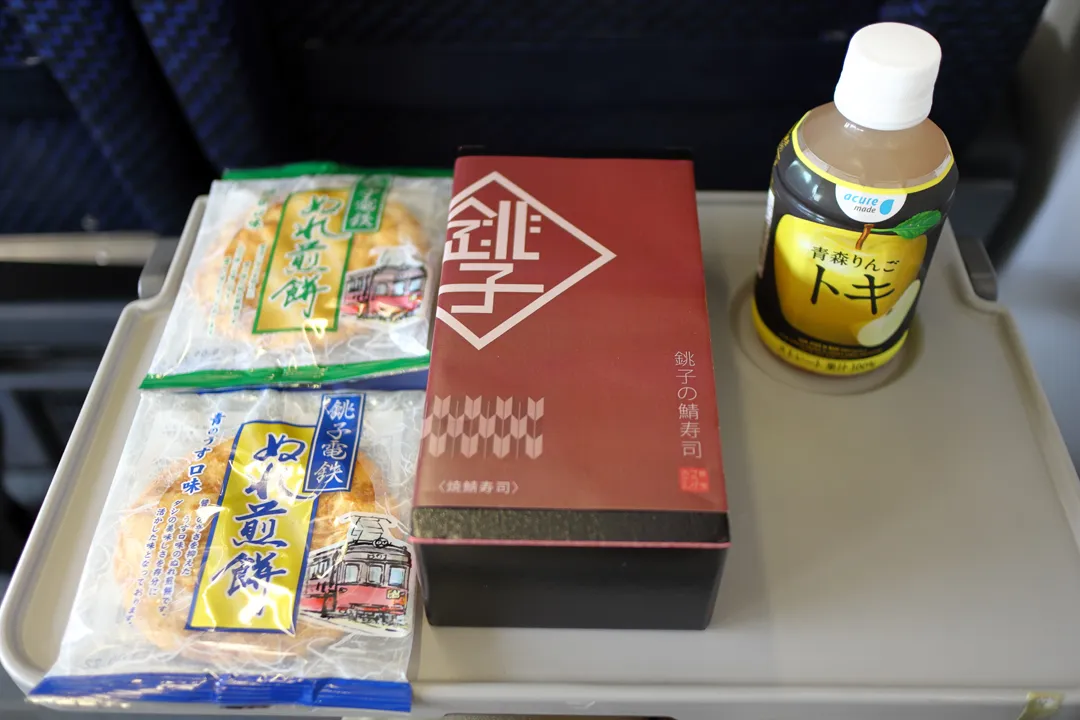
Finally, it was time for the train to depart, and with that, the end of our honeymoon was also approaching quickly, but there were (and still are) many other extensive travels ahead.
